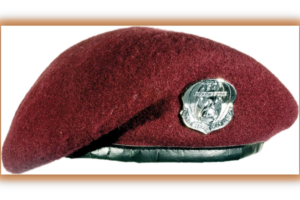The Bagpipes of Mexico
By Bernadette Inclan
Have you ever heard of the Martyrs from the St. Patrick’s Battalion? These are the ones that gave their lives for the Mexican cause. It was during the Mexican-American War and invasion of 1847. If you go to San Angel that is southwest of Mexico City, you will find a Celtic Cross amongst the marble shrines memorializing these heroes.
Every September 13 and again on March 17, St. Patrick’s Day, a color guard from the Mexican Army marches to this memorial to honor their memory. You will hear the bagpipes and witness the flags of Mexico and Ireland carried proudly. Dignitaries representing both nations attend to pay tribute to an obscure battle between Mexico, Ireland and the United States.
What makes this an unusual, yet distinct chapter of history is that six-hundred Irish-American soldiers fought for Mexico rather than serve with the American forces in the Mexican-American War of 1846. They are known as heroes and martyrs to Mexico and deserters and traitors to Americans. But who were these men and why were they considered martyrs? This is their story.

St. Patrick Battalion Memorial
Image from Wikipedia
In 1835, Texas won its independence from Mexico and by the 1840’s, as an independent nation, it wanted protection from Mexico’s interference. Annexation would guarantee security from Mexico and they made their request to the United States. Because the United States had never annexed an independent nation, President John Tyler encountered several dilemmas. Would Texas become a territory; a state; would it be a slave state or free? It would take a military force to acquire and maintain this Texas Republic. With President Tyler’s campaign towards a war, he would use the inflamed American opinion to further his cause. The American Army stationed in the Texas Republic needed abled bodies and experienced soldiers to meet their needs.
To put this historical event into context, we need to look back at what was going on with the Irish immigrants. In the bustling seaports of Eastern America, there was a fear of and contempt for the Irish. The newspapers vowed to eradicate “Jesuit abomination.” They harangued that, “the ill-clad and destitute Irishman is repulsive to our habits and our taste.” Signs were posted on storefronts and other places stating, “Irish need not apply”.
The Irish were the perfect catch for the United States Army. Any Irish man who enlisted for five years was guaranteed citizenship for himself and his family. The Army promised comfortable barracks, fine uniforms, the best medical treatment and advancement for the more ambitious. The reality was far from the promises made.
John Riley was one of these Irish immigrants. He was a tough, charismatic Galway man; a veteran of the British army. Winning his British stripes was his major source of pride. However, he soon found, with many Irish Catholics in the British ranks, a sergeant major’s stripes and sash did not guarantee respect. He was just another “Shanty Irish.” In 1843, Riley left the British army and his family in Galway to start over in the United States. He was soon to discover that America was at the pinnacle of a virulent anti-Papist, and anti-Irish discrimination influencing all strata of American life.
John Riley enlisted in the United States Army as a private and joined the other Irish and American troops on a steamer bound for Texas. The officers’ antipathy toward foreigners in general and Irish Catholics in particular, veered from verbal abuse to extreme physical punishments. The officers worked their recruits on regimental maneuvers and compensated their lack of battlefield experience with harsh and instantaneous discipline. The officers routinely slapped, punched, and kicked soldiers who misstepped during a drill or who failed to button their shirt or jacket properly.
On the fringes of the Army encampment were the gamblers, prostitutes, con artists, and hawkers of alcohol who enticed the soldiers to spend their money. Most especially, it was the Irish soldiers when caught returning to camp in a drunken state who were severely punished. Many officers ordered soldiers caught drinking several times branded on the forehead with the letters “HD” for “habitual drunkard” a measure that appalled Riley and fellow British army veterans.
For the most trivial offenses, such as uniform stains or a stumble during maneuvers, the officers punished by forcing the offender to sit atop a wooden sawhorse for hours with his hands bound behind his back and iron weights chained to his feet. Although officers were to administer military justice with no regard to religion or ethnicity, records show that punishments levied upon immigrants proved far grimmer than that of their American counterparts.

Image from CelticLife.com
The Irish immigrant soon concluded that the U.S. Army was no place for the Irish Catholic to serve. The Army was demanding them to fight a Protestant crusade against Catholic Mexico out of pure greed and moral righteousness. This was too reminiscent of Catholic Ireland’s attempt to break with its British conquerors in the 17th and 18th centuries. The killing, looting, rape, and senseless destroying of Mexican civilian property reminded them of the British injustice back in Ireland.
John Riley, like hundreds of Irish soldiers, plunged into the Rio Grande in the dark of night to join the Mexican Army. He wrote in his journal, “In April 1846, listening only to the advice of my conscience for the liberty of a people which had war brought on them by the most unjust aggression, I separated myself from the North American forces.” The Mexican Army commissioned him a first lieutenant, paid a better wage, promised citizenship and 320 acres of land at the war’s end.
The Mexican-American War sealed the fates of the two participants. The United States garnered huge amounts of territory and wealth placing it on the world stage. For Mexico, the war sent this emerging nation into a spiral descent that it is still working out even after 150 years.
For John Riley and his company of Irishmen, the punishment inflicted went beyond the military code of the day. The hangings and branding were brutal. John Riley became somewhat of a folk hero with no bona fide finale after the war. There are inconsistent records showing him returning to Ireland while others have him living in Mexico with an aristocratic wife. There is a record in the city of Vera Cruz that states “…on the thirty-first of August 1850… curate of the parish church of the Assumption of Our Lady, buried in the general cemetery the body of John Riley, of forty-five years of age, a native of Ireland, unmarried, parent’s unknown, died because of drunkenness, without sacraments…” Now you know the rest of the story and why Mexico honors these men as heroes and martyrs.
About the Author:
 Bernadette Inclan, SJHMC is a Cytotechnologist with St. Joseph’s Hospital Health Center in Phoenix, Az. She was a graduate student at the University of Texas at San Antonio and received her masters in Health Care Administration from Southwest Texas State. Originally from Galveston Texas, she has lived in San Antonio, San Diego, Ca. and now resides in Phoenix. In addition to her love of writing short stories, Bernadette does extensive research in the area of Mexican – American history and genealogy. She does most of her writing in this genre and has been published in genealogy publications. Bernadette is married with two sons and a granddaughter.
Bernadette Inclan, SJHMC is a Cytotechnologist with St. Joseph’s Hospital Health Center in Phoenix, Az. She was a graduate student at the University of Texas at San Antonio and received her masters in Health Care Administration from Southwest Texas State. Originally from Galveston Texas, she has lived in San Antonio, San Diego, Ca. and now resides in Phoenix. In addition to her love of writing short stories, Bernadette does extensive research in the area of Mexican – American history and genealogy. She does most of her writing in this genre and has been published in genealogy publications. Bernadette is married with two sons and a granddaughter.
BIBLIOGRAPHY
Eisenhower, John S. D. So Far From God: The U.S. War with Mexico 1846-1849. 1989
Hanson, Jeffrey L. The St. Patrick’s Battalion of the Mexican-American War: Why They Deserted Just to Fight On Honor’s Thesis. May 200
Stevens, Peter F. The Rogue’s March 1999
Miller, Robert Ryal Shamrock, and Sword: The Saint Patrick’s Battalion in the U.S.-Mexican War 1989
One Man’s Hero DVD Starring: Tom Berenger, Joaquim de Almeida, Daniela Romo, Mark Moses, Stuart Graham. Theatrical Release Date: 9/24/1999


All Comments Are Welcome